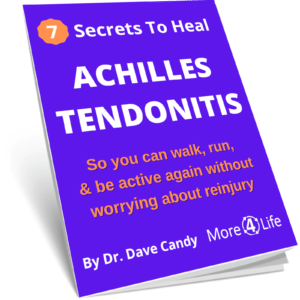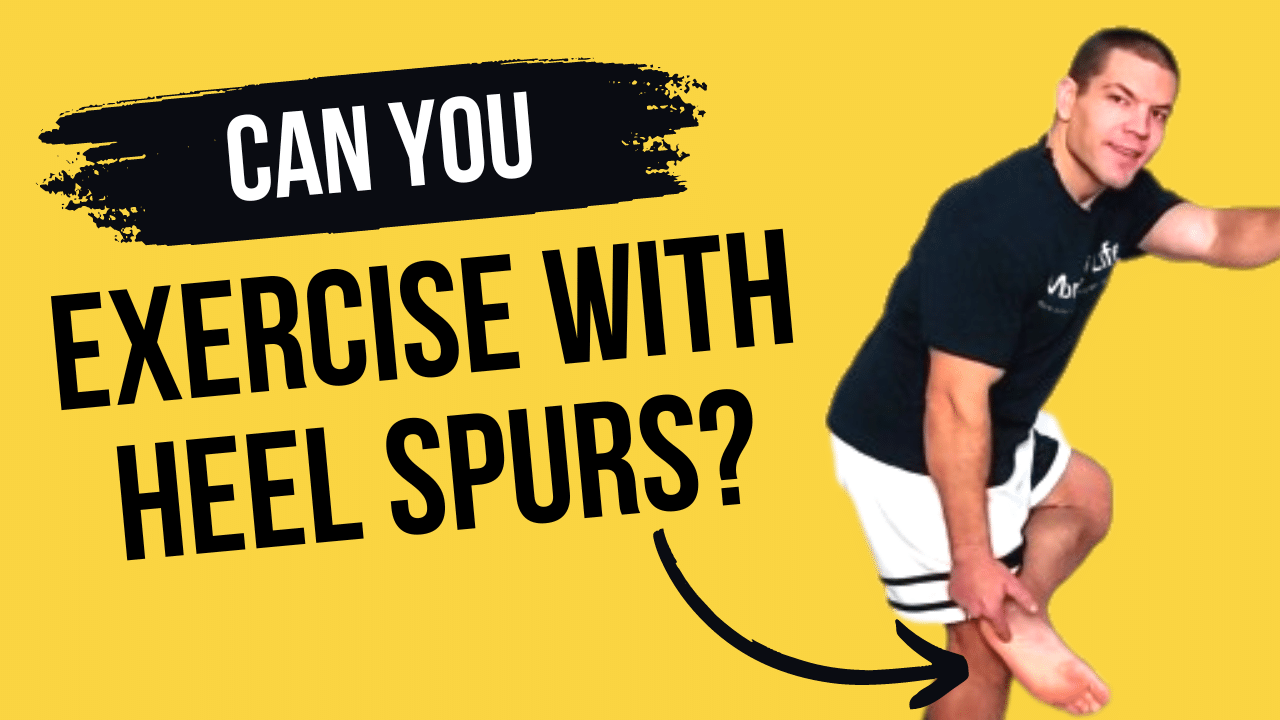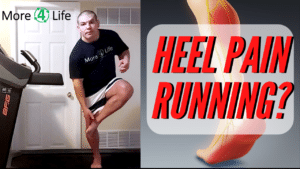Many active people who have been diagnosed with heel spurs wonder, "Can I exercise with heel spurs?" Well, the good news is:
You CAN exercise with heel spurs
In fact, you SHOULD exercise with heel spurs. However, you need to be smart about which exercises you do. Watch the video to learn which exercises to do and which exercises to avoid with heel spurs.

Heel Spurs - The Avid Exerciser's Achilles Heel
Heel spurs can put a sudden halt on your exercise routine, especially if you're an avid runner or walker.
When you can't do the activities you enjoy, it can start to make you feel depressed.
Fortunately though, heel spurs DON'T have to derail your exercise routine.
What Are Heel Spurs?
There are two different types of heel spurs:
- Heel spurs the bottom of the heel - These are typically associated with plantar fasciitis, but they're not the same things. Learn the differences between heel spurs vs plantar fasciitis.
- Heel spurs on the back of your heel - These are common commonly associated with Achilles tendinitis or Achilles tendinopathy
What Causes Heel Spurs?
Both heel spurs on the bottom of your foot as well as heel spurs on the back of your foot are causedby the same mechanism.
What is that mechanism?
Heel spurs are caused by an abnormal pull of the tendon where it attaches to the bone.
Whether that be the plantar fascia or the Achilles tendon, that's essentially what bone spurs in general are.
Bone spurs are your body's normal response to an abnormal force.
What that means is that if a tendon is pulling abnormally on a bone, your body is going to lay down more bone in order to build itself up stronger. That way it can withstand those forces that are placed upon it.
That's a principle known as Wolff's Law - that your bones will adapt and change in response to the forces that are applied to them.
It's a more specific version of the SAID principle (Specific Adaptations to Imposed Demands).

So How Do You Fix A Heel Spur?
If abnormal forces are the cause of heel spurs, then the way to fix a heel spur is to address those abnormal forces.
How do you do that?
Exercises For Heel Spurs
Largely, you want to avoid high-impact exercises as they can cause a lot of force on your heel.
Running and jumping are some examples of high-impact exercises that can put pressure on your heel, so it’s best to avoid them at first.
Once your heel has healed, then you can get back to running.
Low Impact Aerobic Exercise
Instead, low-impact exercises such as biking or swimming can help you maintain a good blood flow to your tendons. This is important because your blood carries the nutrients and oxygen that you tendons and bones need to heal.
Walking is also a good exercise, provided you have good shoes with proper arch support.
Orthotics For Heel Spurs
People with heel spurs on the bottom of their foot or on the back of their heel often have higher arches, which can make walking more difficult.
While higher arches don't usually allow you to pronate too much and overstretch your plantar fascia, they can cause pinpoint pressure on the back of your heel and toes.
In such cases, it is a good idea to get orthotics or inserts for your shoes.
However, avoid hard orthotics as they may cause additional discomfort.
Soft, accommodative, and padded orthotics or gel inserts with a high arch can help take up the space in your arch without causing additional pain and pressure on the heel.
Spenco Ground Control Shoe Insoles for W...
38% OffBalance Exercises For Heel Spurs
Since heel spurs are a normal response to abnormal forces, the goal is to fix those abnormal forces.
Sometimes, the abnormal force is some form of overpronation, which can put more pressure on the inner side of your heel.
To avoid overpronation, keep your foot in a neutral position.
Balancing on one leg is a good start; whether you're walking or running,
if you can't stand and balance on one leg, it's going to be hard to control the motion of your foot and ankle and keep your body stabilized over one leg.
If needed, you can use your hands hold onto something until you develop your balance.
Hip Strengthening Exercises
Your hip strength affects your foot as well, so if your hip is weak, you're going to end up overpronating as well.
Strengthening your hip helps not only strengthen the arch of your foot. Hip strengthening also helps keep your knee from going inward while you're standing on one leg.
Once you can balance on one leg, you can start doing small knee bends to help control your foot and ankle position as you're moving.
This is especially important if you're going to be running or landing from a jump.
Conclusion
In conclusion, you CAN exercise with heel spurs.
You just need to be smart about:
- WHAT exercises you do
- HOW MUCH of those exercises you do
- HOW INTENSELY you exercise, and
- HOW OFTEN you exercise
These roughly translate into the acronym FITT.
- Frequency - How often?
- Intensity - How hard?
- Time - How much?
- Type - What exercises?
If you have a heel spur and need help to get back to exercising safely and comfortably, tap the button below to request an appointment with one of our expert physical therapists.
Like this post? You might enjoy these other posts about heel pain:
Heel Spurs vs Plantar Fasciitis
Is My Heel Pain Plantar fasciitis vs Achilles tendonitis?
10 Causes Of Heel Pain Running & How To Stop Them




